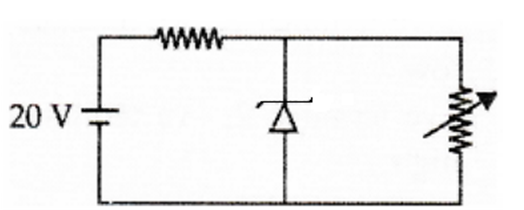 Multiple Choice Questions
Multiple Choice QuestionsOn increasing the temperature of a conductor, its resistance increases because the
relaxation time increases
electron density decreases
relaxation time decreases
relaxation time remains constant
Assertion: Long distance transmission of a.c. is carried out at extremely high voltages.
Reason: Because when the distance is large, voltage has to be large.
If both assertion and reason are true and reason is the correct explanation of assertion.
If both assertion and reason are true but reason is not the correct explanation of assertion.
If assertion is true but reason is false.
If both assertion and reason are false.
Given that the mobility of electrons in Ge is 0.4 m2 V-1 S-1 and electronic charge is 1.6 × 10-19 C. The number of donor atom ( per m3 ) semiconductor of conductivity 500 mho/m is
8 × 1021
8 × 1015
5 × 1021
8 × 1016
A circuit consisting of five resistors each of resistance R, forming a Wheatstone bridge. What is the equivalent resistance of the circuit?
2R
R
2R/3
R/2
Assertion: Total current entering a circuit is equal to leaving the circuit by Kirchhoff's law.
Reason: It is based on conservation of energy.
If both assertion and reason are true and reason is the correct explanation of assertion.
If both assertion and reason are true but reason is not the correct explanation of assertion.
If assertion is true but reason is false.
If both assertion and reason are false.
In the given circuit, the voltage across the load is maintained at 12 V. The current in the zener diode varies from 0-50 mA. What is the maximum wattage of the diode?

12 W
6 W
0.6 W
1.2 W
A photon is incident having frequency 1 x 10 sec-1. Threshold frequency of metal is 5 x 1013 sec-1. Find the kinetic energy of the ejected electron.
3.3 × 10-21 J
6.6 × 10-21 J
3.3 × 10-20 J
6.6 × 10-20 J
C.
3.3 × 10-20 J
In the photoelectric effect, the incident photon's energy is utilized in ejecting the electron and remnant energy is the kinetic energy of the electron
The relation between kinetic energy and threshold frequency of photon is given as
where h - Planck's constant
ν - incident frequency
ν0 - threshold frequency
We know that
h = 6.63 × 10-34 J s
ν = 1.0 × 1014 sec-1
ν0 = 5 ×1013 sec-1
K.E = 6.63 × 10-34 × (1.0 × 1014 sec-1 5 ×1013 sec-1 )
= 6.63 × 10-34 J.s × 0.5 × 1014 sec-1
⇒ K.E = 3.3 × 10-20 J
Find the voltage drop across a capacitor connected with a resistance and a battery of 60 V in series after a long time.
0V
60 V
30 V
38 V
